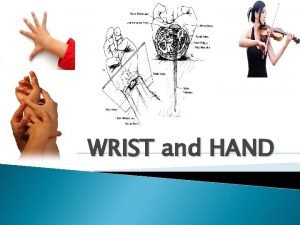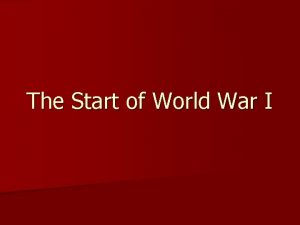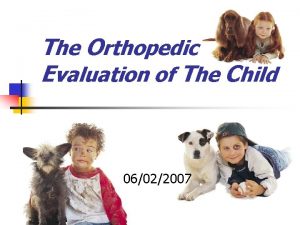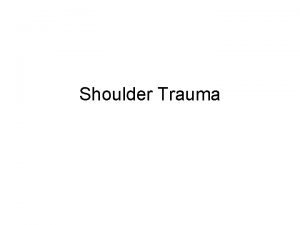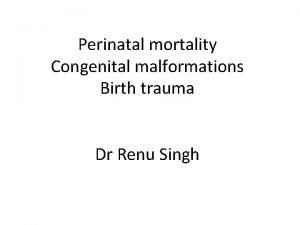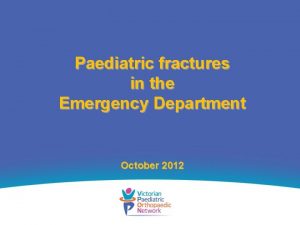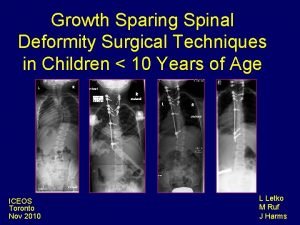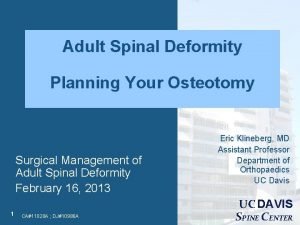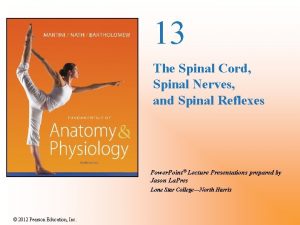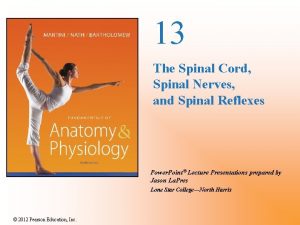The surgical management of spinal deformity in children












- Slides: 12

The surgical management of spinal deformity in children with a Fontan circulation: Development of a treatment algorithm Royal Orthopaedic Hospital, Birmingham Scott Evans, Arul Ramasamy, David S Marks, Jonathan Spilsbury, Paul Miller, Andy Tatman, Adrian Gardner

Introduction • Series of cardiac shunt procedures for an anatomical or physiological single ventricle • Creates total cavopulmonary circulation pumping venous blood in to pulmonary and systemic circulations simultaneously • Many variations of procedure since original description • Total cavopulmonary connection • Performed between 5 and 7 years • Requires life long anticoagulation

Current Treatment • To date, all cases have utilised posterior instrumented fusion • Associated with high complication rate (84%) Hedequest et al (2006) • Increasing use of growing rod instrumentation for deformity correction

Aim • To compare growing rod instrumentation and posterior spinal fusion in the management of scoliosis in children who undergone cavopulmonary (CP) shunting or Fontan procedure • To describe our treatment algorithm to manage these complex patients

Treatment algorithm

Results • 6 cases identified. Median age 11 yrs (6 -16 yrs) • 2 patients with CP shunts. Median age 7 (6 -8 yrs) • 4 patients with completed Fontan procedure. Median age 13 (11 -16 yrs) Case Cardiac diagnosis Cavopulmonary shunt (Pre-Fontan) 1 Double outlet left ventricle 2 Hypoplastic Left Heart Syndrome Fontan circulation completed 3 Hypoplastic Left Heart Syndrome 4 Tricuspid atresia 5 Atrio-ventricular septal defect 6 Atrio-ventricular septal defect Scoliosis aetiology Age at index spinal procedure Weight (kg) Thoracogenic 8 20. 8 Hemivertebrae T 6 and L 1 6 13. 1 Thoracogenic 11 34 Thoracogenic 16 11 51 25. 9 Thoracogenic 15 46

Index Spinal Procedure • Noted trend for greater blood loss in those pts who had their index spinal procedure after completion of their Fontan procedure • 1 pt required intra-operative adrenaline, but no sequelae • No significant post-operative complications (1 x UTI) • All patients discharged from ITU within 48 hours and discharged home within 10 days Index Spinal Case Procedure Time spent prone (hours) Cavopulmonary shunt (Pre-Fontan) 1 Vertical Expandable 5 Prosthetic Titanium Rib (VEPTR) 2 Limited growth arrest Patient in lateral position Fontan circulation completed 3 Paediatric ISOLA 3 4 5 6 Posterior fusion Paediatric ISOLA Posterior fusion 3. 5 4 8 Blood loss mls/kg (total mls) Intra-operative event 5 (100) No 20 (260) No 46 (1200) Significant hypotension requiring adrenaline bolus No No No 37 (1900) 16 (350) 65 (3000)

Outcome • Median FU – 87. 6 months (52 -103 months). 1 pt died 24 months post procedure from underlying cardiac pathology • Median pre-operative Cobb angle 64. 5 degrees (37 -90 degrees) • Median post-operative Cobb angle 50. 5 degrees (26 -65 degrees) • Deformity correction of 24. 2% (13 -37. 7%) Index Spinal Length of Follow Pre-Op Cobb Case Procedure -Up (months) Angle Cavopulmonary shunt (Pre-Fontan) 1 VEPTR 73. 8 90 56 2 37 26 (i)Paediatric Isola and Anterior Release (9/12 post index procedure) (ii) 5 x growing rod lengthenings (iii) Definitive posterior fusion aged 14. No 80 65 No 75 63 No 46 40 (i) 6 x growing rod lenthenings (ii) Definitive posterior fusion aged 16. (iii) Revision fusion for pseudoarthrosis aged 17. 54 36 No Growth arrest 89. 9 Fontan circulation completed 3 Paediatric 52. 0 ISOLA 4 Posterior 24. 0* fusion 5 Paediatric 103. 0 ISOLA 6 Posterior fusion 87. 6 Final Cobb Angle Further Spinal Procedures *Pt died from underlying cardiac condition 24 months post index spinal procedure

Discussion • Continued improvements in the treatment of complex congenital cardiac abnormalities results in increased life expectancy with the subsequent need to manage the spinal deformity into young adulthood • The use of growing rod instrumentation can be successfully employed in this patient population with little morbidity. All patients successfully tolerated subsequent lengthenings without complication

Discussion • Posterior instrumented fusion was associated with a trend towards increased blood loss, operation duration and resultant haemodynamic instability Central Venous Pressure (CVP) and Pulmonary Capillary Wedge Pressure (PCWP) in a patient undergoing posterior instrumented fusion with a Fontan circulation. Haemodynamic instability noted as reducing PCWP despite adequate CVP filling.

Conclusion • Early surgical intervention with growing rod instrumentation systems allows staged correction of the spinal deformity and reduces the haemodynamic insult • Due to the haemodynamic changes that occur with the completed Fontan circulation, the initial scoliosis surgery should ideally be undertaken when in the CP shunt stage • Despite the technical difficulties, it is possible to manage these spinal deformities with an associated Fontan circulation





